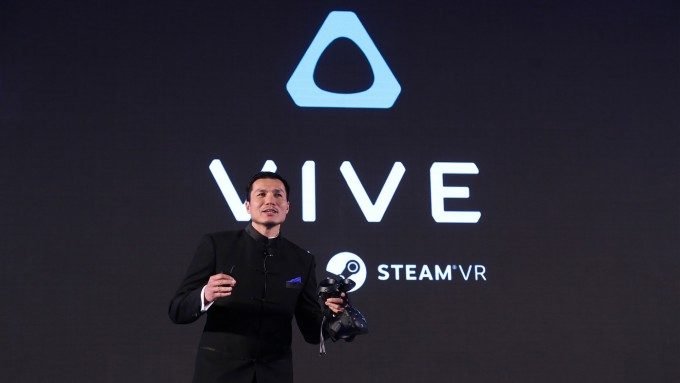HTC’s China Regional President of Vive, Alvin Wang Graylin, took to the stage at the Unity Vision Summit in Asia this week and made a series of bold predictions for where we’ll see VR in the next two years.
In a presentation this week in Beijing, Graylin, who has been closely involved with HTC’s ‘Vive X’ accelerator, made 10 predictions each for VR in 2017 and 2018. His ambitious forecast paints a scene of significant continued acceleration of VR in the next two years.
2017 Predictions
- VR PGC grows to 10k+ titles
- New dev tools/cameras enable UGC VR explosion
- VR Ready PCs outsell standard PCs by Q4 2017
- Mobile VR sales exceed 50 million units
- VR becomes the new consumer status symbol
- Education becomes major VR growth driver
- VR ads begin to supplement dev income
- VR developer shortage drives pay jump
- Vertical industries adopt VR in big way
- Someone will spend 30 days inside VR non-stop
2018 Predictions
- Full-length VR block-buster movie driving mass awareness/desire
- Real-estate developers begin to sell VR-ready micro-apartments
- VR development becomes most popular class in colleges globally
- First integrated selectable AR+VR product hits the market
- AI enables life-like VR companions for the elderly and lonely
- Employers begin offering work from home programs via VR
- Celebrity life-streaming becomes new social phenomenon
- All key retailers begin offering VR shopping models
- VR social solutions get traction and exceedingly sticky
- High-quality VR MMORPG releases and becomes instant hit
While these predictions are bold, as China Regional President of Vive, Graylin is arguably in one of the best positions to make such VR forecasts because of his time spent assessing startups in the space and as a key strategist for HTC’s own VR plans; one certainly might wonder if his prediction of 50 million mobile VR sales is based on what’s next for the company. While HTC hasn’t launched its own mobile headset, they are manufacturing the Pixel and Pixel XL, the first phones compatible with Google’s Daydream VR platform on Android. As a leading company in VR, and one of the world’s most prominent smartphone manufacturers, HTC is surely in a good position to consider launching their own mobile VR headset.
For some of these predictions, the writing is already on the wall. The Guinness World Record for longest time spent continuously in a VR headset has already been set at just over one day. Other unofficial records have been set at more than four days. It’s not unthinkable that someone would aim for 30 continuous days (though it might become one those records that goes from incredible to simply invoking the question of “why?”).
As for “VR-ready micro-apartments,” this might sound further off, but it’s not uncommon to have particularly small apartments in China’s most densely populated urban centers, where the idea of a ‘VR addition’ as a selling point isn’t unrealistic for 2018. HTC has already partnered with Chinese hotels to offer in-room Vive setups.
Roadblocks
Predictions aside, Graylin also acknowledges a number of significant “roadblocks” still facing the fledgling VR industry:
- New revenue models
- Killer apps/content
- More natural UI
- Better displays
- More AI integration
- Low-power high-processing
- Faster networks (LAN/WAN)
- Battery technology
- Denser storage
All of these roadblocks can also be seen as opportunities. While all are important, a “more natural UI” sticks out to me particularly because achieving it doesn’t require that we invent anything new, it simply requires considerate thought about the design of VR interactions to find a modality that really sticks. There’s a range of interesting approaches to VR interaction design already out there, but so far a dominant methodology hasn’t emerged. It’ll take a while yet before we figure out the equivalent of right-click, left-click, minimize, maximize, and more in VR.


